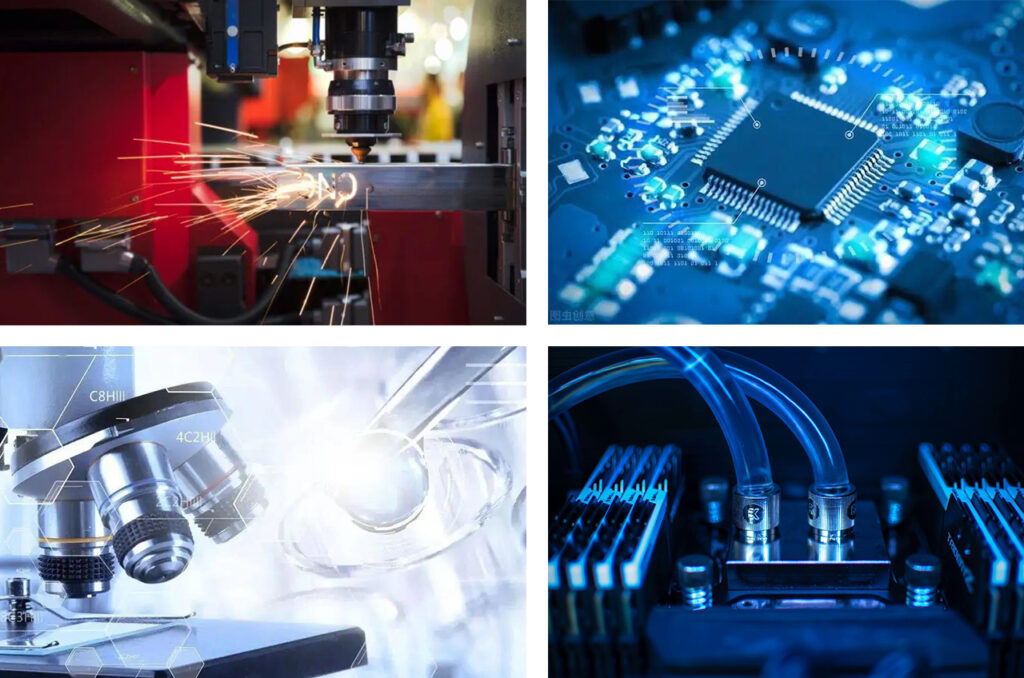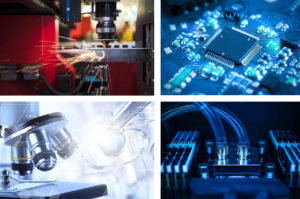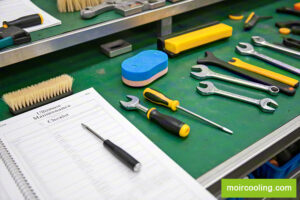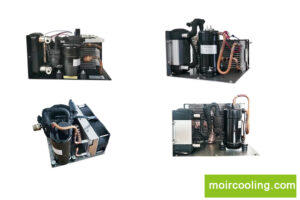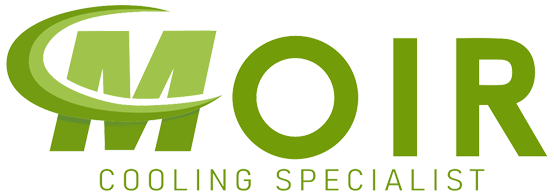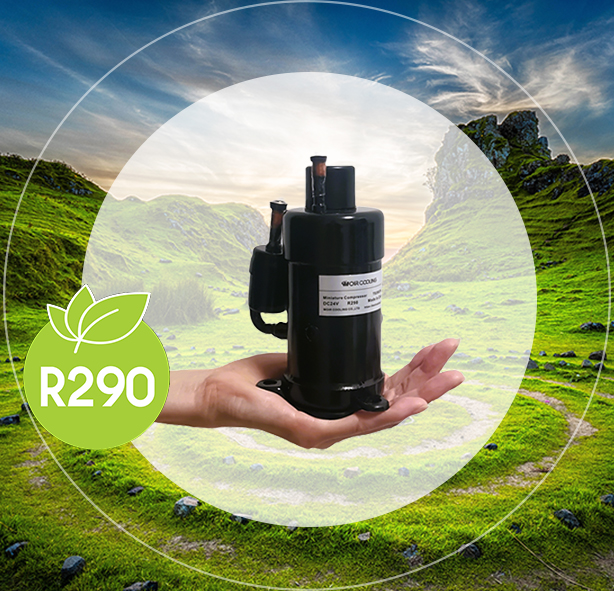Introduction
From precision lasers in industrial automation to high-performance processors in telecommunications, today’s electronics and laser systems are running hotter than ever before. As power densities rise and devices shrink, the demand for compact cooling solutions becomes not just a preference but a necessity. Gone are the days when a bulky fan or oversized heat sink could handle thermal regulation. Modern systems require tailored thermal management solutions—efficient, quiet, compact, and adaptable.
In this guide, we explore seven of the most effective small-scale thermal management technologies engineered for electronics and laser applications. Whether you’re managing heat inside an industrial enclosure, cooling a fiber laser module, or trying to preserve the lifespan of sensitive sensors, these solutions offer innovation in miniature form.
The Rising Demand for Compact Cooling Solutions
As form factors shrink, the demand for miniature thermal management solutions has surged. From wearables to industrial automation panels, thermal engineers are being asked to do more with less space. Traditional cooling systems—bulky, rigid, or overpowered—are often ill-suited for these modern needs.
Moreover, regulations and market expectations are shifting. There is growing pressure to improveenergy efficiency, extend equipment life, and reduce environmental impact—all while maintaining or improving system performance. The result? A thriving market forcompact, modular cooling systemsdesigned specifically for high-performance electronics andlaser chiller applications.
Why Electronics and Laser Systems Require Specialized Thermal Management
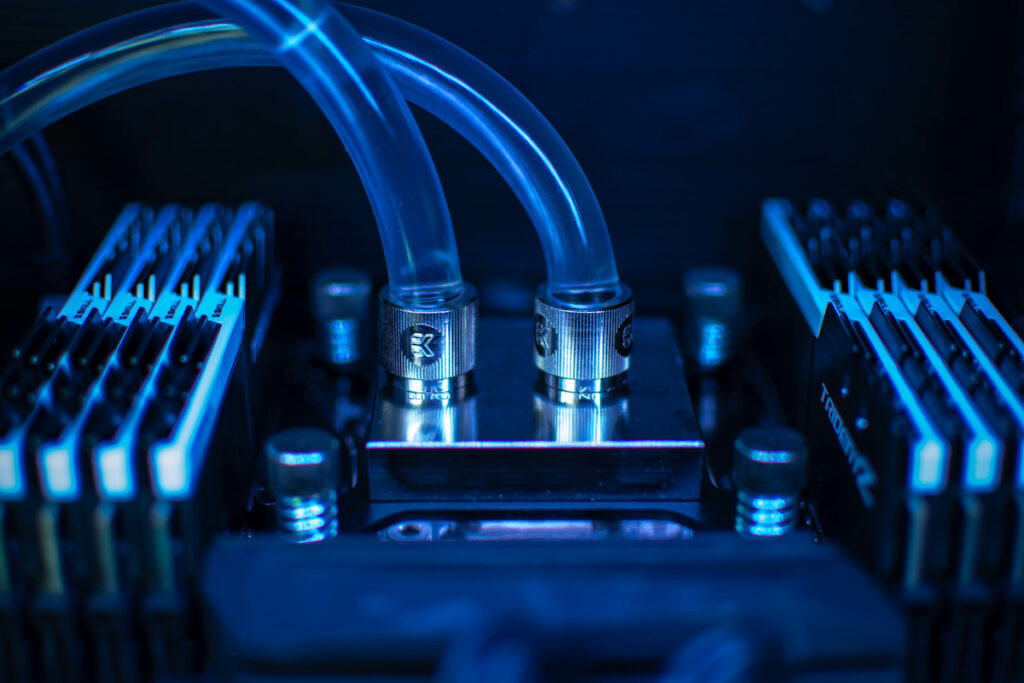
Unlike general-purpose appliances, Electronic components, particularlypower electronics, laser modules,and control boards, generate significant heat during operation. Without effective dissipation, this heat can cause:
- Reduced performance
- Shortened device lifespan
- Sensor drift or instability
- Complete system shutdown
Lasers are particularly sensitive. Even slight temperature fluctuations can degradebeam quality, wavelength stability, and diode efficiency. That’s whylaser cooling systemsare often custom-engineered and finely tuned to the system’s thermal profile.
The Challenge of Balancing Size, Performance, and Efficiency
One of the most difficult tasks for system designers is achieving an optimal balance between:
- Cooling power: Measured in watts, this defines how much heat can be removed.
- Compactness: The ability to fit within tight physical constraints.
- Energy efficiency: How much power the system uses to achieve its cooling effect.
Thermal engineers are constantly walking a tightrope between cooling performance, size constraints, and power consumption.Traditional air cooling systems often fall shortin compact enclosures or mobile platforms. This is wherespecialized thermal management systemscome into play—offering advanced options like liquid cooling, micro compressors, and hybrid technologies to deliver targeted and reliable results.
Understanding Compact Cooling
What “Compact” Really Means in Industrial Cooling
In the context of industrial cooling, “compact” doesn’t just mean small—It implies:
- High cooling density(W/L or W/kg)
- Modular configuration
- Ease of integration
- Low noise and vibration
- Lightweight construction
In short, it’s about maximizing cooling performance while minimizing physical and electrical footprint.
Passive vs. Active Cooling: Which Is Best for Your Application?
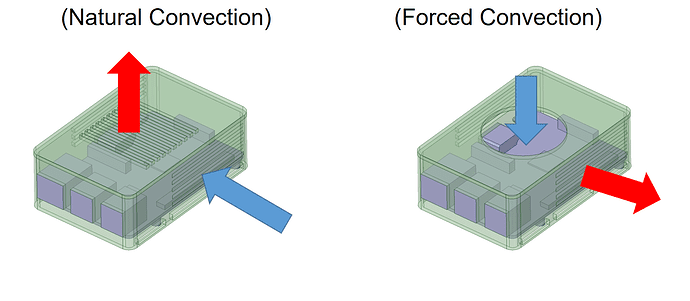
Passive cooling vs. Active cooling
Passive cooling relies on natural heat dissipation through conduction and convection, typically with heat sinks or thermal pads. While low-maintenance, it’s limited in capacity.
Active cooling—such as fans, pumps, or compressor-based chillers—offers greater performance and dynamic control, essential for high-wattage applications likelaser cutting equipmentoredge AI servers.
Selecting between them depends on:
- Your system’s heat output
- Whether airflow is available
- The level of temperature precision required
To explore more about passive cooling vs. active cooling: https://moircooling.com/whats-active-cooling-active-cooling-vs-passive-cooling/
Solution #1: Miniature Water Chillers
How Water Chillers Manage High Heat Loads in Tight Spaces
Mini water chillers use closed-loop liquid circulation to transport heat away from high-power components. These systems often include a compressor, condenser, pump, and reservoir in a compact assembly. They’re especially effective for spot cooling, where airflow isn’t feasible.
You’ll find these chillers in laser dermatology devices,fiber laser cutters,semiconductor lithography tools, and battery testing stations, where temperature stability within ±0.1°C is critical.
Why Choose Water Chillers:
- Excellent for high heat loads
- Closed-loop systems minimize maintenance
- Rapid response to changing thermal loads
However, they require more setup—such as pumps, reservoirs, and plumbing—so are best suited for fixed installations or OEM integration.
Related keywords: mini chiller system, liquid cooling for lasers, electronic cooling unit
Solution #2: Thermoelectric (Peltier) Coolers
Thermoelectric coolers (TECs) leverage the Peltier effect to move heat from one side of a ceramic module to the other. Withno moving parts, they are extremely reliable, vibration-free, and compact.
TECs are ideal for laser diodes, CCD sensors, and micro-optical systems, where even minor fluctuations in temperature can lead to performance loss. However, they’re best suited forlow to moderate heat loads, and their coefficient of performance (COP) is lower than compressor-based options.
Advantages:
- Easy to control via voltage or PWM
- Ideal for temperature stabilization
- Stackable for higher cooling
Limitations:
- Lower efficiency at higher heat loads
- Waste heat still needs to be dissipated
When to Choose TECs Over Compressor-Based Systems
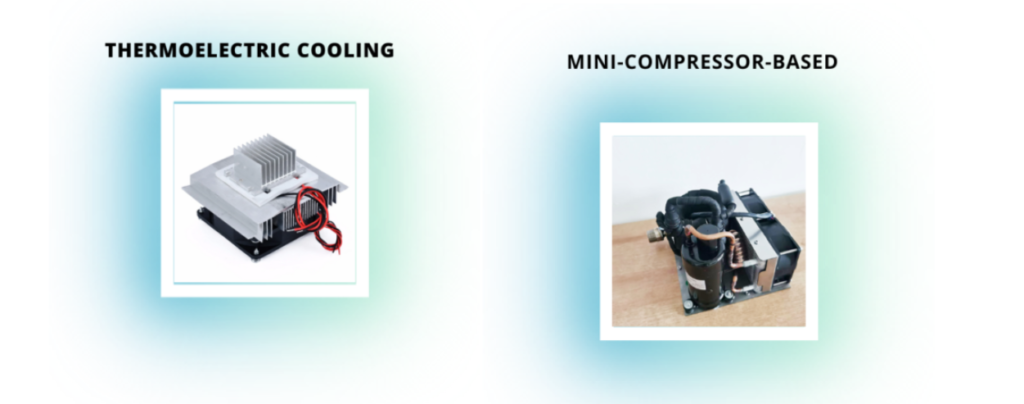
If your application involves quiet operation,minimal vibration, or high portability—such as in portable spectroscopy units or UAV-based laser systems—TECs offer a compelling solution.
To explore more: https://moircooling.com/thermoelectric-vs-compressor-based-cooling-which-is-best-for-you/
Keywords: thermoelectric laser cooler, TEC module, peltier thermal control
Solution #3: Micro Rotary Compressor Systems
Mini rotary compressors, such as MOIR’s advanced 24V/48VDC and R290-based models, represent a game-changing approach to compact active cooling. These systems combine high cooling capacity, adjustable RPM, and flexible integration into tight mechanical enclosures.
These cutting-edge systems use mini rotary compressors to deliver full refrigerant-cycle cooling in extremely small packages.
Their small form factor and low vibration output make them ideal for portable freezers,vehicle-mounted laser coolers, and mobile medical fridges. Unlike large refrigeration units, these systems can be powered by DC inputand controlled with 0–5V signals, ideal for IoT integration.
Design Considerations for Integration
Key considerations include mounting orientation, condensate management, and power draw under variable load conditions. MOIR compact cooling systems offer plug-and-play options for OEMs, complete with quick-connect hydraulic fittings and modular layouts.
Keywords: micro compressor cooling, mini DC chiller, portable cooling system
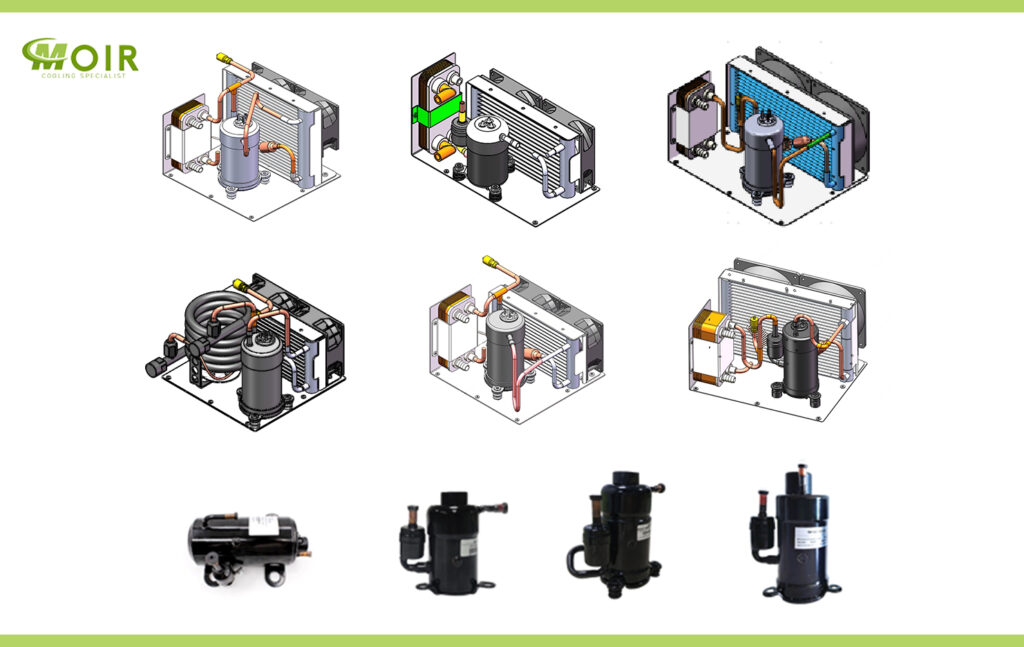
Solution #4: Air-to-Air Heat Exchangers
These devices move heat from inside an enclosure to the ambient air usinginternal and external fans plus a thermal core (often aluminum or heat pipe-based). They provide sealed system cooling with no contact between internal and external air.
Outdoor telecom cabinets, defense electronics, and dust-prone industrial sites benefit from these systems. They maintain enclosure IP ratings while actively managing internal temperatures.
Benefits:
- Keeps systems sealed (IP-rated)
- Minimal maintenance
- No refrigerants needed
Though less powerful than chillers, they offer reliable operation in harsh or remote conditions.
Choosing brushless DC fans, corrosion-resistant coatings, and removable filters can significantly improve reliability and ease of service.
Keywords: enclosure cooling, IP-rated air exchanger, sealed cabinet thermal management
Solution #5: Liquid-to-Air Cooling Plates

Targeted Spot Cooling for Precision Components
This system involves a cold plate attached to a heat source, through which coolant is circulated and then rejected via an air-cooled radiator. Ideal for laser diodes, power amplifiers, and optical sensors, where direct contact cooling is needed.
Most installations combine cooling plates with integrated or external chillers, ensuring stable flow rates and pressures.
System Design:
- Compact pump, reservoir, and plate assembly
- Flexible tubing for modular routing
- Available with quick-disconnect fittings
It strikes a balance between targeted cooling and system scalability, especially when space around the heat source is limited.
Keywords: fiber laser cooling, cold plate chiller, liquid loop electronics cooling
Solution #6: Fan-Assisted Heat Sinks
While traditional, fan-cooled heat sinks are still effective for moderate heat loads. Using aluminum or copper fin structures and axial or blower fans, they’re widely available and customizable. When designed well, active heat sinks remain a cost-effective solution. The trick lies in optimizing fin density, material (typically copper or aluminum), and fan selection.
Choosing the Right Heat Sink Material and Fin Geometry
Copper has superior thermal conductivity but is heavier and more expensive. Aluminum is more common due to its balance of weight and cost. Fin spacing must balance surface area and airflow resistance.
Fans add noise and are prone to dust accumulation. For critical systems, consider sealed fan modules, low-noise PWM control, and predictive maintenance via RPM monitoring.
Enhancements like PWM fan control, anti-vibration mounts, or heat pipes can improve their performance in demanding environments.
Keywords: high-performance heat sink
Solution #7: Custom Hybrid Cooling Systems
Sometimes, the best solution is a hybrid approach—for example, combining a TEC for precise temperature modulation with a micro chiller for bulk heat rejection.
OEMs may benefit from co-engineered solutions, integrating sensors, control boards, and custom piping in a compact housing. MOIR specializes in such customized integrations for industries ranging from telecom to life sciences.
Selecting the Right Cooling System
How to Match Cooling Capacity with System Requirements
Every system has its thermal signature. Be sure to calculate the heat load (W), expected ambient temperature, and target component temperature. Oversizing or undersizing can lead to inefficiencies or overheating.
Size, Power Source, and Ambient Conditions: What Matters Most
- Size constraints: Will the system fit in your design envelope?
- Power availability: Do you require DC power? Renewable energy support?
- Environmental exposure: Dust, vibration, temperature spikes?
Introduce MOIR Compact Cooling Solutions
At MOIR, we specialize in engineering cutting-edge thermal management systems built for the most demanding compact applications. Our portfolio centers around mini rotary compressor-based chillers, which are meticulously designed to balance cooling power, small form factor, energy efficiency, and control versatility.
Unlike off-the-shelf cooling modules, MOIR systems are built to adapt to the needs of OEMs and integrators across a wide range of industries. Whether you’re designing a precision laser cooling solution, an industrial electronics enclosure, or a mobile refrigeration system, we provide you with plug-and-play compact chiller modules ready to be integrated directly into your system architecture.
Our cooling modules span a wide performance range—from300W to 900W cooling capacities, with DC and AC input options, speed-adjustable compressors, and quick-connect hydraulic fittings. This allows for fast prototyping, easy system integration, and long-term field reliability. With MOIR, you’re not just getting a product—you’re gaining a thermal solution partner capable of supporting you from concept to production scale.
Why Choose MOIR Compact Cooling Solutions?
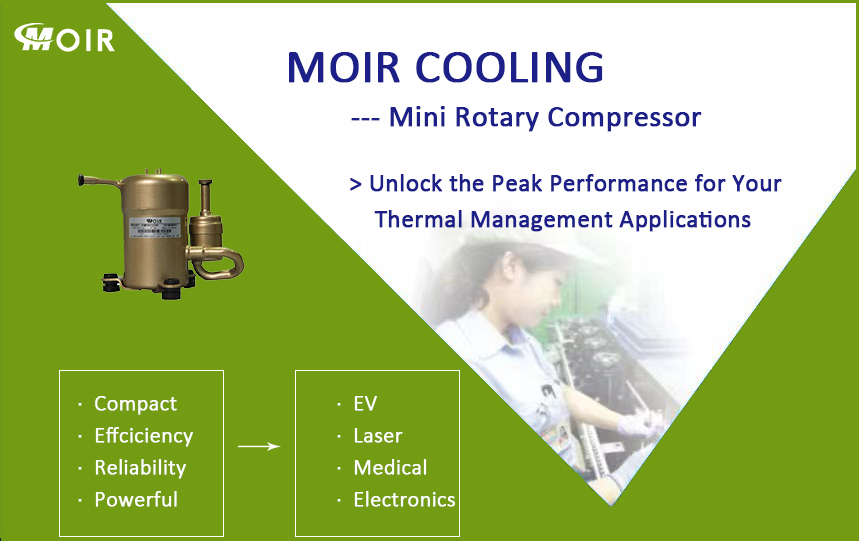
There are many compact cooling solutions on the market—but few are engineered with the precision, adaptability, and OEM-readiness that define MOIR. Here’s why engineers, product managers, and system integrators across the globe choose MOIR:
- Ultra-Compact Design with Industrial-Grade Power. Our cooling systems deliver up to 900W of active cooling in packages that are often smaller than a shoebox. With dimensions starting at just 230×120×125mm, they’re ideal for tight enclosures, mobile systems, and retrofitted installations.
- Advanced Mini Compressor Technology. Our proprietary mini rotary compressors feature brushless DC motors,variable speed control (0–5V signal), and optimized vibration damping. These compressors enable stable operation under fluctuating load and ambient conditions.
- Flexible Power and Control Options. Whether you need 24VDC, 48VDC, or 220VAC input, we have ready solutions. Our chillers integrate seamlessly with micro controller systems, PLCs, and smart IoT platforms, allowing real-time temperature regulation and diagnostics.
- Customization and OEM Integration. MOIR provides co-engineered solutions including custom housing, hydraulic layouts, mounting brackets, and digital interfaces. We offer white-label manufacturing, CAD design support, and even tailored cooling curves to match your exact thermal profile.
- Reliability in Harsh Environments. Designed for -22°C to 55°Cambient conditions, MOIR chillers are used in outdoor telecom cabinets, defense-grade modules, and industrial laser systems operating in dusty, high-heat environments. Built with durable components, corrosion-resistant finishes, and reinforced piping, they’re made to last.
Design Trends and Innovations
The Rise of Modular Cooling Units
Scalable, swappable, and maintenance-friendly—modular unitsare redefining thermal flexibility in manufacturing lines and mobile deployments.
Smart Cooling with Sensor Feedback and IoT Integration
Real-time temperature and pressure sensors,remote diagnostics, and adaptive fan or compressor speeds optimize performance and energy use.
Emerging Materials and Eco-Friendly Refrigerants
Materials like graphene coatings and ceramic-based coolers are pushing the limits. Meanwhile, refrigerants like R290 offer high efficiency with low GWP.
Sustainability in Cooling
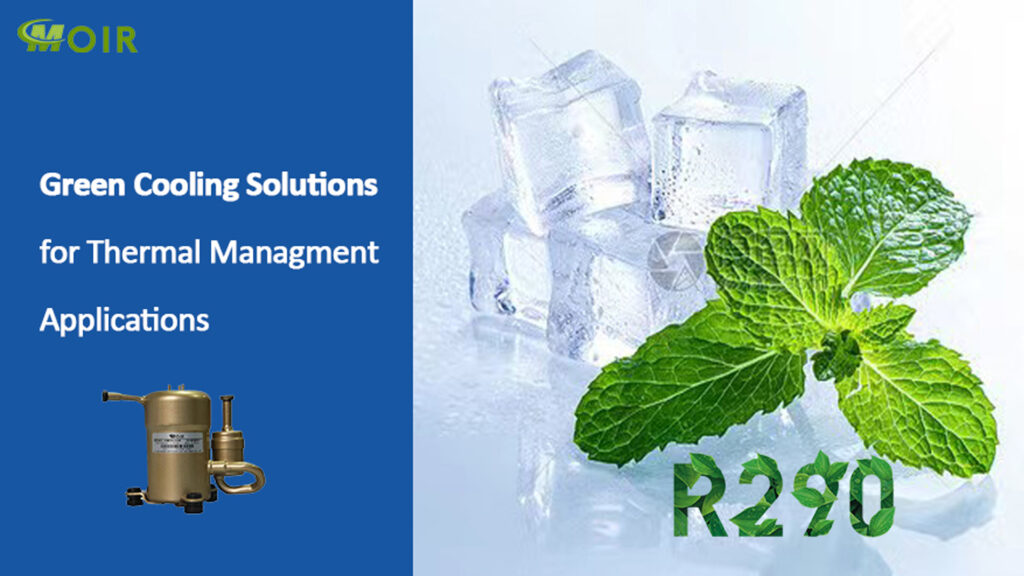
Energy-Efficient Designs That Reduce Carbon Footprint
MOIR systems offer DC-driven compressors, and variable speed control, cutting energy waste by over 30% in some use cases.
Eco-Conscious Coolants and Their Impact
Our adoption oflow-GWP refrigerants like R290 reflects a commitment togreener cooling technologies for a sustainable future.
Conclusion
The future of electronic and laser systems lies in smarter, smaller, and more efficient design—and compact thermal management is the linchpin holding it all together. As devices evolve to become more powerful and densely packed, the margin for thermal error shrinks dramatically. Inefficient cooling doesn’t just lead to performance drops—it leads to premature failure, operational downtime, and higher total cost of ownership.
For industries like semiconductors, telecommunications, laser processing, medical diagnostics, and defense electronics, investing in the right thermal solution isn’t a luxury—it’s a strategic necessity. Compact cooling not only preserves performance but also extends lifespan, increases energy efficiency, and enhances overall reliability.
What’s next? The era of modular, scalable, and intelligent thermal systemsis already here. With advancements in sensor-based feedback, IoT control, and environmentally responsible refrigerants, tomorrow’s cooling systems won’t just regulate temperature—they’ll optimize themselves for every condition and application.
Choosing a provider who understands your needs, industry, and space constraints is more important than ever. That’s why partnering with an experienced compact cooling expert like MOIR can give you the edge in both innovation and execution.
Looking for a smarter, space-efficient cooling solution?
📩Contact our experts for a free consultation and system evaluation. info@moircooling.com

